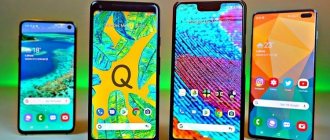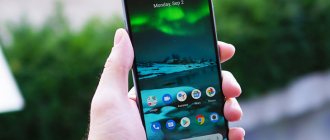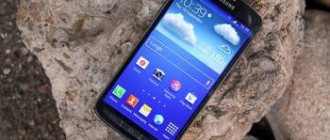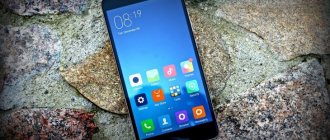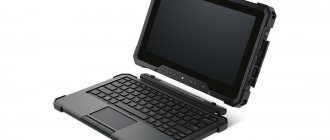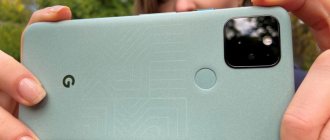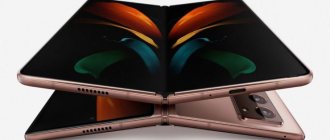The Sony brand is known as a manufacturer of reliable household and digital equipment. At the beginning of 2000, the Japanese company created a joint venture with the Swedish company Ericsson and began producing mobile phones that instantly became a legend. The rating presents the best Sony smartphones 2022, which are worth paying attention to when choosing a mobile gadget.
Sony history
The history of Sony began with a small workshop, which was opened by two Japanese engineers in 1946. The first successful development was attachments for radio receivers. The second no less successful step was the production of cassette recorders, launched in 1951. In 1960, televisions entered the market, and later household video recorders.
founders of Sony
The production of smartphones in collaboration with Ericsson began in 2002. The cooperation continued until 2011, and then Sony bought out the Swedish partner’s share, and since that time smartphones have been produced under the Sony brand.
Sony is one of the few mobile phone companies that has been able to survive after Chinese manufacturers entered international markets. Meanwhile, even such giants as BlackBerry and LG decided to stop producing smartphones.
Sony managed not only to survive, but also to increase revenue; in the first quarter of 2022, the company’s mobile division showed profit for the first time in several years. However, this growth was not due to an increase in sales volume, but due to an increase in the average cost of models sold. For comparison, the volume of smartphones sold in 2022 amounted to 2.9 million units, and in 2014 – 39.1 million, that is, there was a reduction of 13.5 times. But the company apparently decided to rely on quality rather than quantity. And as you know, you have to pay for quality. That is, the main activity is the production of niche, expensive smartphones.
Today in the Russian Federation it is not so easy to find Sony smartphones; even in Moscow there are no branded stores. The company does not promote in Russia; Sony smartphones can only be found in “gray” stores. Official retailers practically do not sell Japanese devices, only in M-Video and that, not the entire model range is presented there, but individual models. But despite this, fans of the brand continue to buy using any available methods.
Features of Sony phones
On the official Sony website, the catalog presents one line of mobile smartphones, the Xperia, but this line is divided into series:
- “Tens” – smartphones with index 10 – are budget copies of flagships. The models are distinguished by a proprietary design and good, but not top-end, characteristics. The company focuses on photos and videos, so the quality of the cameras is high.
- “Five” belongs to the middle category or pre-flagship. There are already really cool cameras here, but in everything else the company maintains a balance, leaving the most modern solutions for flagships.
- “Units” are flagship models with a top-end layout and spectacular design. These models can compete with the best smartphones in the world.
In addition, there are series with letter designations:
- J is the simplest and cheapest option.
- T is a modification of the TX series, the difference being a non-removable battery and a different housing configuration.
- TX is the flagship version of the line.
- V is a model with an original design, the housing of which is protected from dust and moisture according to the IP57 standard.
When creating Sony smartphones, special attention is paid to multimedia properties, so the brand’s model should be chosen by users whose goal is to listen to music and watch videos. Sony smartphones are also worth purchasing for those who are looking for the best cameras with many features and advanced image processing technologies. In addition, Sony offers powerful chipsets and energy-intensive batteries. At the same time, the models are quite compact, they are comfortable to hold in the hand, Sony’s designers and designers do not suffer from gigantomania.
The disadvantages include prices, since the company plans to make a profit by increasing the cost, and not by increasing sales volume. In addition, in reviews of past years it was often noted that smartphones heat up under load, but new models do not have this drawback. One more thing - modest packaging; Chinese manufacturers, as a rule, are more generous and add accessories to the box, and not just the phone itself.
How to choose a Sony smartphone?
You should choose a Sony smartphone in 2021-2022 through a comparative analysis of the following characteristics:
- Size . The device should fit comfortably in your hand and fit into your pocket or bag. Which one is better to choose is up to you to decide.
- Productivity . The main parameter that should be taken into account when choosing if the user is a gamer. For the rest, the performance of modern models is quite enough, it is 3 GB. If you are buying a phone for gaming, then the memory should be at least 4 GB.
- Autonomy . If you spend a lot of time in the office or at home, then this option fades into the background. But if you travel often, then the battery life of your gadget is an important factor when choosing.
- ROM volume . Many Sony models do not have a memory card slot. Therefore, think in advance about how much ROM you need. For example, cloud services can be used to store documents and multimedia files. But applications and games cannot be installed in the cloud. For these purposes, you should choose a model with a large amount of memory.
- Camera quality . The quality of pictures depends mainly on the number of megapixels. This parameter shows how many points are in the photo matrix; the more there are, the higher resolution the photos will be. For example, for phones with a diagonal of 5 inches, a display with a resolution of 1280x720 pixels is sufficient. And for models with a diagonal of 5.5 inches, the resolution should already be 1920x1080 pixels.
Comparison table of all presented models
| Name | Display | RAM, GB | Built-in memory, GB | OS | Battery capacity, mAh | CPU |
| Sony Xperia 1 III | 6.5 ” 3840×1644 | 12 | 256 | Android 11.0 | 4500 | Qualcomm SM8350 Snapdragon 888 5G |
| Sony Xperia 10 III | 6" 2520x1080 | 6 | 128 | Android 11.0 | 4500 | Qualcomm SM6350 Snapdragon 690 5G |
| Sony Xperia 5 II | 6.1" 2520x1080 | 8 | 256 | Android 10.0 | 4000 | Qualcomm SM8250 Snapdragon 865 |
| Sony Xperia 5 III | 6.1" 2520x1080 | 8 | 256 | Android 11.0 | 4500 | Qualcomm SM8350 Snapdragon 888 5G |
| Sony Xperia PRO-I | 6.5″ (3840×1644) 120 Hz | 12 | 512 | Android 11 | 4500 | Qualcomm Snapdragon 888, 2840 MHz |
| Sony Xperia 10 II Dual | 6″ (2520×1080) | 4 | 128 | Android 10 | 3600 | Qualcomm Snapdragon 665 |
| Sony Xperia L4 Dual | 6.2″ (1680×720) | 3 | 64 | Android 9.0 | 3580 | Mediatek Helio P22 (MT6762V) |
| Sony Xperia Z5 Dual | 5.2″ (1920×1080) | 3 | 32 | Android 5.1 | 2900 | Qualcomm® Snapdragon™ 810, |
| Sony Xperia 1 II | 6.5″ (3840×1644) 60 Hz | 8 | 256 | Android 10 | 4000 | Qualcomm Snapdragon 865 |
| Sony Xperia XZ1 | 5.2″ (1920×1080) | 4 | 64 | Android 8.0 | 2700 | Qualcomm Snapdragon 835 MSM8998 |
| Sony Xperia L3 | 5.7” (1440 x 720) | 3 | 32 | Android 8.0 | 3300 | Mediatek MT6762 |
| Sony Xperia XZ Premium | 5.5″ (3840×2160 (4K)) | 4 | 6 | Android 7.0 | 3260 | Qualcomm Snapdragon 835 MSM8998 |
| Sony Xperia X Compact | 4.6″ (1280×720) | 3 | 32 | Android 6.0 | 2700 | Qualcomm Snapdragon 650 MSM8956 |
| Sony Xperia TX | 4.55″ (1280×720) | 1 | 16 | Android 4.1 | 1750 | Qualcomm MSM8260A |
| Sony Xperia XA2 Plus | 6″ (2160×1080) | 32 | 4 | Android 8.0 Oreo | 3580 | Qualcomm Snapdragon 630 |
⇡#Design, ergonomics and software
Sony Xperia 1 III looks almost no different from Sony Xperia 1 II, and that, in turn... No, in fact, the second “Iskperia” has changed noticeably in comparison with the first - chopped edges have returned, the speaker has returned to the front surface (the second speaker, conversational, and so on, of course), the camera moved to the corner and so on. But Mark III and Mark II are already very easy to confuse. Both of them seem like aliens from the early 2010s: noticeable frames around a flat rather than curved screen, a visually thick body, a matte back that looks like it’s made of metal (actually made of glass, of course), calm colors - black, gray and lilac. In Russia only black is represented.
How to feel about this classicism is up to you, but in the design of the Xperia 1 III, in fact, there are no random decisions, everything here is subordinated to practical convenience. The smartphone only seems thick - in fact, with a thickness of 8.2 mm, it is rather one of the thinnest when compared with its competitors. The flat screen has less glare, and the frames at the top and bottom solve the problem of unnecessary things (like the front camera) interspersing into the image. Well, thanks to the matte back surface, which is also devoid of bends, the smartphone is comfortable to hold - it helps that it is narrow and long, with a 21:9 screen format.
Sony Xperia 1 III, front panel: stereo speakers at the top and bottom, there is also a front camera and a status indicator above the screen
Sony Xperia 1 III, rear panel: in the corner there is a block with four cameras, there are also sensors and a single LED flash
You can only blame the Sony Xperia 1 III for being “boring”, but we are talking about a solid smartphone for respectable gentlemen for 100 thousand rubles - if you want fun, you should look for something more cheerful and “youthful”. Well, or buy some original case - by the way, there is none included in the kit, but the waterproof (IP68 standard) and non-slip case does not necessarily require it. The screen, by the way, uses tempered Gorilla Glass Victus glass - its capabilities, if you are lucky enough not to drop your smartphone on a corner, are clearly visible on the Nokia XR20, which can be used to crack nuts.
Sony Xperia 1 III, left side: slot for SIM cards and/or microSD memory card
Sony Xperia 1 III, right side: volume key, power/lock key with fingerprint scanner, programmable key, camera shutter button
On the edges we see not only the usual Sony memory card slot without a pin lock, but also several “extra” controls - the volume control and gadget power/lock keys are supplemented by a camera shutter button and a programmable application shortcut key. On Google Assistant, it is not fixed by default; you don’t even need to reassign it.
Sony Xperia 1 III, top edge: mini-jack and microphone
Sony Xperia 1 III, bottom edge: USB Type-C port and microphone
The classic Xperia elite bonus in the form of a mini-jack is in place. There is also a status indicator, unusual in our time, which is located above the top edge of the screen, which, by the way, occupies 84.2% of the front surface - more than many smartphones with cutouts and holes.
For some reason, the fingerprint scanner is built into the power key - Sony consistently avoids on-screen sensors. Yes, a capacitive sensor is definitely more sensitive than an optical or ultrasonic one, but the small surface area and possible problems with the device accidentally unlocking in a pocket or when putting it away in a pocket are significant disadvantages of this solution. However, if we compare it with the experience of using the Sony Xperia 1 II, there were much fewer random unlocks here, this problem has been partially solved. But you still have to enter a PIN or password from time to time due to “too many attempts,” and there is no facial recognition system.
Sony Xperia 1 III. User interface
View all images (20)Sony Xperia 1 III runs Android 11 with a proprietary shell. There were no major changes over the year. The only noticeable things are the already mentioned additional shortcut key, the screen splitting service using a special icon on the desktop, and modified shooting applications (the basic camera mode is built into the professional one). There are several questions about them, but we will ask them in the appropriate section. Otherwise, there are minimal differences from basic Android, but with many pre-installed applications. The shell works quickly and stably; the problems of the Xperia 1 II were not inherited by the third generation.
⇡#Camera
The Sony Xperia 1 III camera has changed compared to its predecessor, both slightly and significantly. It’s a paradox, but a fact: there are again three modules responsible specifically for image formation and supplemented by a TOF module, and all three have 12-megapixel sensors. But the third camera, responsible for zoom, is completely new - and unique, it offers variable focal lengths - the ability to shoot with 2.9x or 4.4x optical zoom. There was nothing like this in smartphones before.
The main camera has a Sony IMX557 sensor of the already mentioned resolution and dimensions of 1/1.7 inches. It works with a lens with an aperture of ƒ/1.7 and an equivalent focal length of 24 mm, plus there is phase detection autofocus with Dual Pixel technology and optical stabilization. The camera, responsible for the wide viewing angle, received an IMX363 sensor with dimensions of 1/2.55 inches, a lens with an EGF of 16 mm and an aperture of ƒ/2.2, without stabilization, but with autofocus. The zoom camera has an IMX 663 sensor, also 12-megapixel, with dimensions of 1/2.9″. The lens can switch between 70 mm EGF at ƒ/2.3 aperture and 105 mm EGF at ƒ/2.8 aperture. It is the traditional focal lengths for photography that explain such “uneven” zoom values - after all, taking into account the traditions of Sony Alpha, the Japanese company makes smartphone cameras based precisely on professional photographic equipment, and not on the usual requests of mobile device users. Autofocus - phase detection, Dual Pixel, optical stabilizer is also available. All optics are from Zeiss.
| From left to right: Wide angle, standard focal length, 2.9x zoom and 4.4x zoom | ||||||
Accordingly, a smartphone with three cameras (Sony insists that the TOF camera is just a sensor, and not a full-fledged module; fair enough, usually they do it the other way around, for the sake of a more serious number in the press release) offers four focal lengths by default - and none "hybrid". The image we can get from the main and wide-angle cameras is exactly the same as on the Sony Xperia 1 II. The level is decent, but not top - remember our comparative test of last year's flagships. First of all, we are pleased with the really very fast and tenacious focus and the burst shooting option - up to 20 frames per second with tracking focus and, for the first time on a smartphone, with the function of tracking objects in real time. But the pictures themselves cannot always boast of ideal color rendition (they gravitate towards cool shades), but they are very good in sharpness over the entire area of the frame - when shooting with both the main camera and the wide-angle one (for which autofocus is available, expanding its scope of application). I will also note the ability to shoot at any focal length at night - the picture, of course, is not always the same in quality (the high-aperture optics of the main camera with the largest sensor, and even with stabilization, are best suited), but you will get a result suitable for publishing on social networks , you can use any of the three cameras. There is no dedicated night mode - in auto mode the camera itself activates it in appropriate conditions; It takes a few seconds to shoot at different exposures and then stitch together.
| From left to right: Wide angle, standard focal length, 2.9x zoom and 4.4x zoom | ||||||
Above we have already touched a little on shooting with a camera with a variable zoom - let's talk a little more in detail. It's an outstanding piece of high-level engineering, but unfortunately the result isn't as impressive as it could be. An optical stabilizer and a relatively large sensor for a mobile zoom camera allow you to feel quite free in different situations and lighting conditions. The intervention of software processing when activating the super resolution zoom add-on (which includes proprietary AI) does not always make the picture better, sometimes allowing excessive pixelation at medium detail. If you do not enable super resolution zoom, the detail will decrease slightly, but without pixelation. I was also not too pleased with the performance of the optics with light sources. But it should be noted that the experience of the photographic department helped us choose a really good, working set of focal lengths for the smartphone - not for a nice line in the description, but for use in reality.
Sony has actually ported the basic camera app into a pro version that debuted on the Xperia 1 II. To return to the base, you need to select the Basic mode, in which the interface is simpler in appearance, can be either horizontal or vertical, and there is no need to tinker with the settings. Moreover, in this mode you can take both photos and videos, although the latter option does not seem obvious - pay attention to the icon at the bottom of the interface. In the “professional” video application Cinematography Pro, the Basic option is no longer available. Fans of serious cameras can switch to one of the other modes, including both manual and full automatic (Auto/P/A/S/M/custom) and shoot only in landscape orientation - the whole set of manual settings copied from Sony Alpha cameras, available only in it.
There are, of course, a lot of settings: from choosing a focus mode (manual, single-frame, tracking) with the option of face/eye detection and exposure mode to activating extended dynamic range and shooting in RAW. This is by far the most detailed pre-installed mobile photography app available today - something experienced photographers will appreciate.
The professional video shooting application has also moved from the Xperia 1 II and is impressive in the number of settings, the ability to create and expand projects, shoot videos with HDR and professional profiles, as well as special “cinema” filters (the so-called LOOK color correction templates). All this looks and feels serious, and indeed provides good opportunities for control over the process, but the question of how necessary this is on a mobile device is up in the air. There is one more question: why can’t you switch between focal lengths during shooting?
As such, there is no portrait mode - with a beautifier, various blur effects, etc. - in the Sony Xperia 1 III. There is only a bokeh mode, in which the smartphone independently determines the object and background, and you set the degree of blur. You can shoot anything in it, not just portraits. But this doesn’t matter: the Xperia 1 III blurs the background quite well, and most importantly, it does it using three focal lengths (except for the widest angle), allowing you not to focus only on full-length portraits.
Among the software features of the Sony Xperia 1 III camera, I will note specific filters that were invented specifically for the smartphone, and were not moved here from Sony Alpha. Most of them look downright strange, but there are also original ones - like the kaleidoscope effect. Moreover, the filters work for both photos and videos.
Sony Xperia 1 III
View all images (29)The video capabilities are good. Video recording in 4K resolution at 60 frames per second in HDR format is supported (only on the main camera - the rest are limited to 4K 30p), there is an effective stabilizer that works quite successfully with 4K. The picture is high quality, smooth, there is no floating shutter effect. But slow-motion video, which was once a signature Xperia feature, is unfortunately limited to 120 frames per second, but in 4K resolution (available only in the Cinematography Pro application). The overall level of video recording is good in any case - a normal flagship level, the lack of 8K can easily be forgiven - this is still an extra option, just for show. And Sony consistently avoids this dust.
The front camera is unremarkable, as before - 8 megapixels (dimensions - 1/4 inch), aperture - f/2.0, without flash and autofocus. The focal length is normal, distortion is at an acceptable level, and there is a blur mode. Selfies come out decent, but in the dark or even in a city at night with good artificial light there are certain problems.
⇡#Display and sound
In the Sony Xperia 1 III, the screen, at first glance, has not changed compared not only with the display of the Mark II, but also with the screen of the first Xperia 1 (forgive once again this inevitable tautology): 6.5 inches, OLED, 3840 × 1644 pixels, extreme pixel density (643 ppi), support for the HDR standard and BT.2020 color gamut. Let me note right away that the screen works in 4K resolution only when the smartphone itself considers it necessary, and the base resolution for it is 2560 × 1096.
But to the already familiar list of virtues, this time the most, perhaps, relevant one was added - a high refresh rate mode of 120 Hz. Thanks to this, we enjoy smooth scrolling of screens, a more refined gaming experience, and suffer from faster battery drain. In games, by the way, to get an increased frequency, you need to switch to the “performance” mode in the special “Game Amplifier” application - otherwise the frequency will be fixed at 60 hertz.
The picture settings have not changed. You can not only adjust the brightness, set up sleep mode, enable the dark theme (more than appropriate here) and so on, but also delve into the image quality parameters, where several unusual presets are offered: the first is the so-called creator mode, in which the image is processed with taking into account 4K resolution, HDR and BT.2020 gamma, which is activated exclusively when watching 4K HDR video. At the same time, in standard mode, enabled by default, the option to enable creator mode when working with content that requires it is activated. A “video enhancement” mode is also available, in which HD and Full HD videos reach a higher resolution with increased color saturation. Those who like complete control can go to the “white balance” section and adjust the color rendition manually - there are tools for this.
The measured maximum brightness level is 385 cd/m2 - the matrix itself has not changed, the result is expected, the history of the Xperia 1 and Xperia 1 II is repeated. For an organic LED screen, this indicator is not a death sentence; the image remains readable even on a sunny day. In adaptive brightness mode, the indicator can increase to 550-600 cd/m2.
Sony Xperia 1 III, gamma in creator mode. Yellow line – Xperia 1 III performance, dotted line – reference gamma
Sony Xperia 1 III, color temperature in creator mode. Blue line – Xperia 1 III performance, dotted line – reference temperature
Sony Xperia 1 III, color gamut in creator mode. Gray triangle – sRGB coverage, white triangle – Xperia 1 III coverage
In the “creator mode”, the color gamut was compressed to sRGB, which is logical - the test patterns support this standard, and the smartphone adequately adjusted to the original colors, as it should in the declared “creator mode”. The average gamma is slightly below the norm - 2.11, the color temperature, in turn, is slightly above the norm - ranges mainly from 7,000 to 7,500 K with a standard of 6,500 K. Average deviation DeltaE on the Color Checker scale, which includes both wide the spectrum of colors and shades of gray is 3.55 with a standard of 3.00. It is impossible to achieve perfectly accurate color reproduction in creator mode from a smartphone, but the level can be called quite acceptable. Unfortunately, DCI-P3 color gamut measurements are not representative of third-party applications. In this case, only certain applications have access to the P3 display mode, but not Dropbox, through which we display test patterns.
If there are certain questions about setting up the Sony Xperia 1 III display - things are not bad, but not perfect, as you expect, looking at the source data, then, as usual, there are zero complaints about the sound. There is a mini-jack combined with a very good sound path, there is Bluetooth 5.2 with support for Dolby Atmos, aptX, aptX HD and LDAC profiles, there are stereo speakers that produce perhaps the best sound among all competitors. In this case, the speaker power has increased by 40% compared to the previous generation Xperia 1, it is also worth saying that the Xperia 1 III became the first smartphone in the world capable of reproducing 360 Reality Audio spatial sound through the built-in speakers, and also recall the proprietary dynamic vibration to the beat sound.

